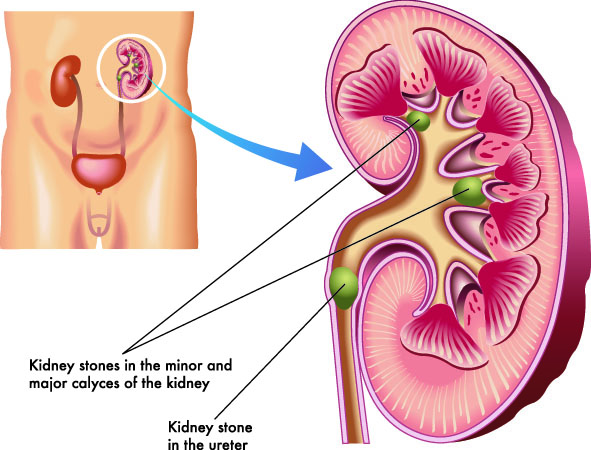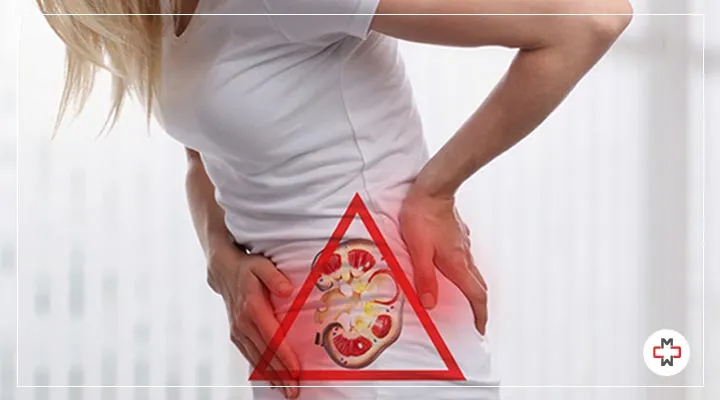Navigating the Signs And Symptoms of Kidney Stones vs UTI: A Thorough Comparison
Navigating the Signs And Symptoms of Kidney Stones vs UTI: A Thorough Comparison
Blog Article
Comprehending the Secret Distinctions Between Kidney Stones and Urinary Tract Infections: A Thorough Review for Clients
Comprehending the distinctions in between kidney stones and urinary system infections (UTIs) is necessary for clients that might be experiencing similar signs and symptoms yet deal with vastly various health and wellness challenges. As we discover these vital aspects, it ends up being clear that recognizing the one-of-a-kind attributes of each condition can exceptionally impact individual outcomes.
Review of Kidney Stones
The development of kidney stones, a commonly debilitating and agonizing condition, highlights the critical value of maintaining renal wellness. Kidney stones, likewise referred to as renal calculi, are solid masses that create from crystals in the urine. These stones can differ in dimension from a grain of sand to a golf ball and can live in any kind of part of the urinary system. The key types of kidney stones consist of calcium oxalate, calcium phosphate, uric acid, struvite, and cystine stones, each with distinct reasons and danger factors.
Several elements add to the development of kidney stones. Dehydration is a substantial threat, as not enough liquid intake can lead to concentrated urine, promoting crystal formation. Dietary practices, consisting of high salt and oxalate usage, can worsen the threat. In addition, metabolic problems and certain medical conditions might incline people to stone development.
Signs of kidney stones can include severe flank hematuria, nausea, and discomfort, which often motivate immediate medical evaluation. Therapy alternatives differ, ranging from raised fluid consumption and dietary adjustments to medical treatments such as lithotripsy or medical removal, relying on the dimension and location of the stones. Comprehending these aspects is important for effective avoidance and administration.
Summary of Urinary System Tract Infections
Urinary system infections (UTIs) represent an usual yet considerable health problem, influencing millions of people annually. These infections take place when microorganisms enter the urinary system, that includes the kidneys, ureters, bladder, and urethra. Most of UTIs are triggered by Escherichia coli, a sort of microorganisms normally discovered in the stomach tract. While UTIs can influence any individual, they are particularly common in women because of anatomical differences that promote bacterial access.
The threat aspects for establishing a UTI consist of sex-related task, specific kinds of birth control, urinary system retention, and a background of previous infections. Straightforward UTIs are normally restricted to the bladder and are a lot more usual in healthy and balanced people, while difficult UTIs might entail the kidneys and take place in those with underlying wellness concerns.
Motivate medical diagnosis and therapy are necessary to protect against difficulties, such as reoccurring infections or kidney damage (Kidney Stones vs UTI). Typically, UTIs are treated with prescription antibiotics, and precautionary steps can be utilized for those with frequent occurrences
Usual Signs And Symptoms Contrast
Signs of urinary tract infections and kidney stones can often overlap, leading to confusion in medical diagnosis. Both problems can provide with pain in the reduced abdominal area or back, however the nature and location of the discomfort commonly vary. In urinary system system infections (UTIs), clients typically experience a burning feeling during peeing, regular urges to pee, and strong-smelling or cloudy pee. On the other hand, kidney stones often tend to trigger severe, acute pain that radiates from the back to the reduced abdomen and groin, usually called colicky pain.
In addition, UTIs may be come with by fever and cools, particularly in more extreme situations, while kidney stones can result in nausea or vomiting and vomiting as a result of intense pain. Both problems can result in blood in the pee (hematuria), yet the existence of blood is extra typically connected with kidney stones. While discomfort throughout peeing is a trademark of UTIs, kidney stones typically provide with even more intense pain episodes, which might go and come. Understanding these sign differences can assist clients in identifying their problem, although medical assessment continues to be essential for precise diagnosis and therapy.
Medical Diagnosis Approaches
Just how can healthcare specialists accurately distinguish between kidney stones and urinary tract infections? The diagnostic process begins with a check this site out complete case history and a thorough review of the patient's symptoms. Medical professionals often do a health examination, which might reveal inflammation in the abdominal area or flank area, guiding the diagnostic pathway.
Lab tests play a crucial role in comparing these 2 problems. Kidney Stones vs UTI. A urinalysis can recognize the existence of blood, crystals, or bacteria, which are a sign of either problem. In instances of urinary tract infections, the urinalysis may reveal a substantial existence of white blood cells and nitrites, while kidney stones might offer with details crystals
Imaging research studies, such as abdominal ultrasound or computed tomography (CT) scans, are vital for envisioning kidney stones. These imaging techniques allow doctor to analyze view publisher site stone dimension, location, and possible blockages in the urinary system system. In contrast, urinary system system infections generally do not need imaging unless complications are presumed.
With each other, these analysis approaches equip medical care professionals to precisely differentiate and identify in between kidney stones and urinary system infections, making sure that clients obtain ideal treatment and administration.
Treatment Options and Prevention
While both kidney stones and urinary system tract infections (UTIs) require punctual therapy, their management strategies differ dramatically.
The treatment for kidney stones frequently involves pain monitoring, hydration, and in many cases, clinical treatments such as extracorporeal shock wave lithotripsy (ESWL) or ureteroscopy to remove or damage down stones. Individuals are regularly recommended to boost liquid intake to help with stone flow and reduce recurrence. Nutritional alterations might also be required, depending upon the stone kind.
On the other hand, UTIs are primarily treated with prescription antibiotics to remove the microbial infection. The details antibiotic prescribed depends on the germs determined and neighborhood resistance patterns. Added actions, such as increased fluid intake and urinary system anesthetics, might aid alleviate symptoms.
Prevention strategies differ as well; for kidney stones, keeping appropriate hydration and adhering to dietary restrictions can be reliable. For UTIs, preventative techniques include proper hygiene techniques, peing after this contact form sexual intercourse, and perhaps prophylactic anti-biotics for persistent infections. Comprehending these therapy and prevention modalities is essential for reliable administration and to reduce the risk of difficulties connected with both problems.
Conclusion

Comprehending the differences in between kidney stones and urinary tract infections (UTIs) is crucial for patients who might be experiencing similar symptoms yet deal with significantly different health difficulties. The main kinds of kidney stones consist of calcium oxalate, calcium phosphate, uric acid, struvite, and cystine stones, each with unique reasons and threat factors.

Report this page